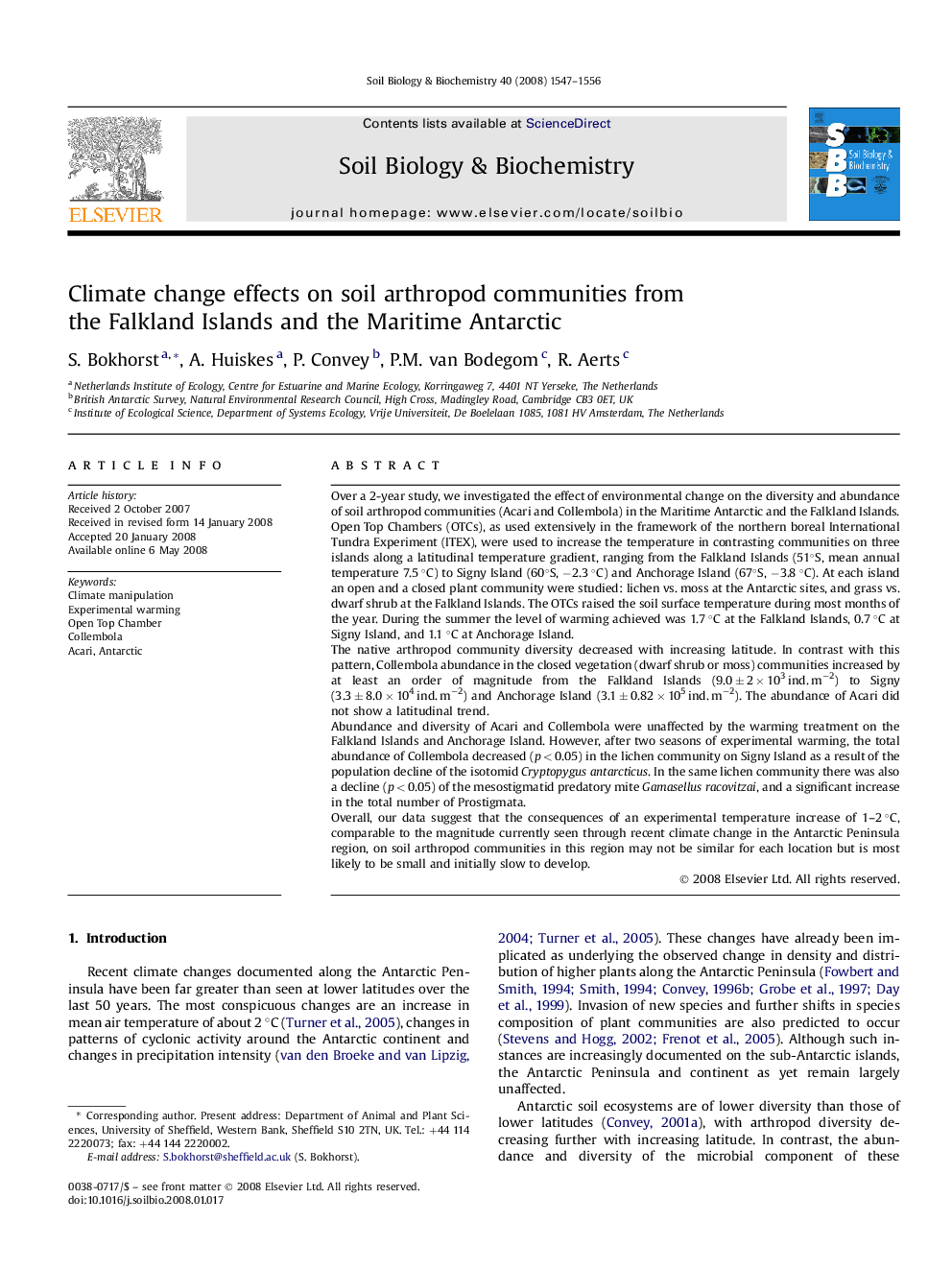| کد مقاله | کد نشریه | سال انتشار | مقاله انگلیسی | نسخه تمام متن |
|---|---|---|---|---|
| 2025805 | 1070011 | 2008 | 10 صفحه PDF | دانلود رایگان |

Over a 2-year study, we investigated the effect of environmental change on the diversity and abundance of soil arthropod communities (Acari and Collembola) in the Maritime Antarctic and the Falkland Islands. Open Top Chambers (OTCs), as used extensively in the framework of the northern boreal International Tundra Experiment (ITEX), were used to increase the temperature in contrasting communities on three islands along a latitudinal temperature gradient, ranging from the Falkland Islands (51°S, mean annual temperature 7.5 °C) to Signy Island (60°S, −2.3 °C) and Anchorage Island (67°S, −3.8 °C). At each island an open and a closed plant community were studied: lichen vs. moss at the Antarctic sites, and grass vs. dwarf shrub at the Falkland Islands. The OTCs raised the soil surface temperature during most months of the year. During the summer the level of warming achieved was 1.7 °C at the Falkland Islands, 0.7 °C at Signy Island, and 1.1 °C at Anchorage Island.The native arthropod community diversity decreased with increasing latitude. In contrast with this pattern, Collembola abundance in the closed vegetation (dwarf shrub or moss) communities increased by at least an order of magnitude from the Falkland Islands (9.0 ± 2 × 103 ind. m−2) to Signy (3.3 ± 8.0 × 104 ind. m−2) and Anchorage Island (3.1 ± 0.82 × 105 ind. m−2). The abundance of Acari did not show a latitudinal trend.Abundance and diversity of Acari and Collembola were unaffected by the warming treatment on the Falkland Islands and Anchorage Island. However, after two seasons of experimental warming, the total abundance of Collembola decreased (p < 0.05) in the lichen community on Signy Island as a result of the population decline of the isotomid Cryptopygus antarcticus. In the same lichen community there was also a decline (p < 0.05) of the mesostigmatid predatory mite Gamasellus racovitzai, and a significant increase in the total number of Prostigmata.Overall, our data suggest that the consequences of an experimental temperature increase of 1–2 °C, comparable to the magnitude currently seen through recent climate change in the Antarctic Peninsula region, on soil arthropod communities in this region may not be similar for each location but is most likely to be small and initially slow to develop.
Journal: Soil Biology and Biochemistry - Volume 40, Issue 7, July 2008, Pages 1547–1556